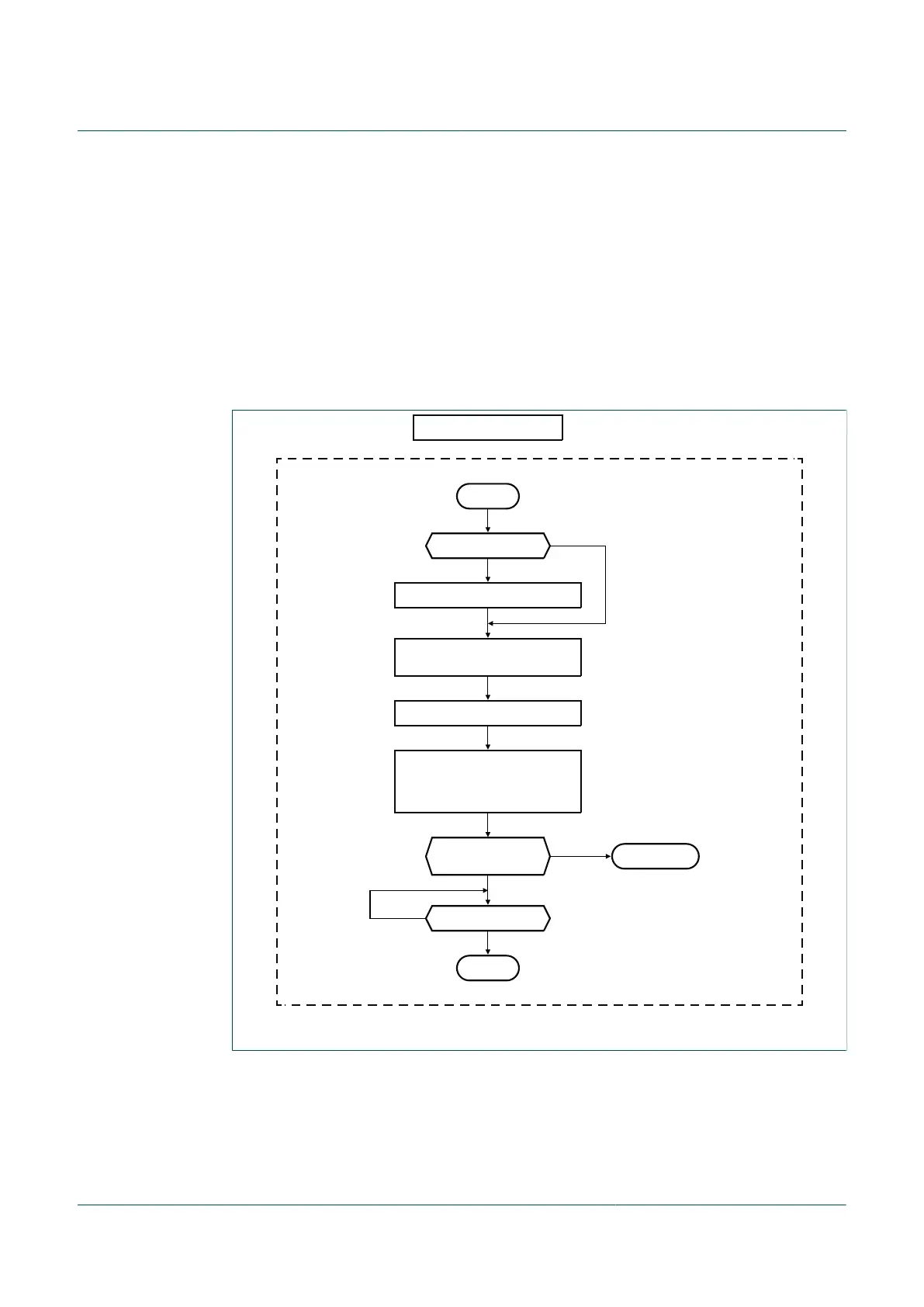NXP Semiconductors
UM11227
NTM88 family of tire pressure monitor sensors
UM11227 All information provided in this document is subject to legal disclaimers. © NXP B.V. 2020. All rights reserved.
User manual Rev. 6 — 24 April 2020
171 / 205
A partial command sequence can be aborted manually by writing a 0 to FCBEF anytime
after the write to the memory array and before writing the 1 that clears FCBEF and
launches the complete command. Aborting a command in this way sets the FACCERR
access error flag which must be cleared before starting a new command.
A strictly monitored procedure must be obeyed or the command will not be accepted.
This minimizes the possibility of any unintended changes to the FLASH memory
contents. The command complete flag (FCCF) indicates when a command is complete.
The command sequence must be completed by clearing FCBEF to launch the command.
Below is a flowchart for executing all of the commands except for burst programming.
The FCDIV register must be initialized before using any FLASH commands. This must be
done only once following a reset.
aaa-031076
WRITE TO FCDIV
(1)
START
FLASH PROGRAM
AND ERASE FLOW
FACCERR?
0
CLEAR ERROR
Note 1: Required only once after reset.
Note 2:
DONE
FCCF?
ERROR EXIT
0
1
1
no
yes
WRITE COMMAND TO FCMD
WRITE 1 TO FCBEF
TO LAUNCH COMMAND
AND CLEAR FCBEF
(2)
WRITE TO FLASH
TO BUFFER ADDRESS AND DATA
FPVIOL OR
FACCERR?
Wait at least four bus cycles
before checking FCBEF or FCCF.
Figure 55. FMC program and erase command flow diagram
10.24.4 FMC burst program execution
The burst program command is used to program sequential bytes of data in less time
than would be required using the standard program command. This is possible because
the high voltage to the FLASH array does not need to be disabled between program
operations. Ordinarily, when a program or erase command is issued, an internal charge
